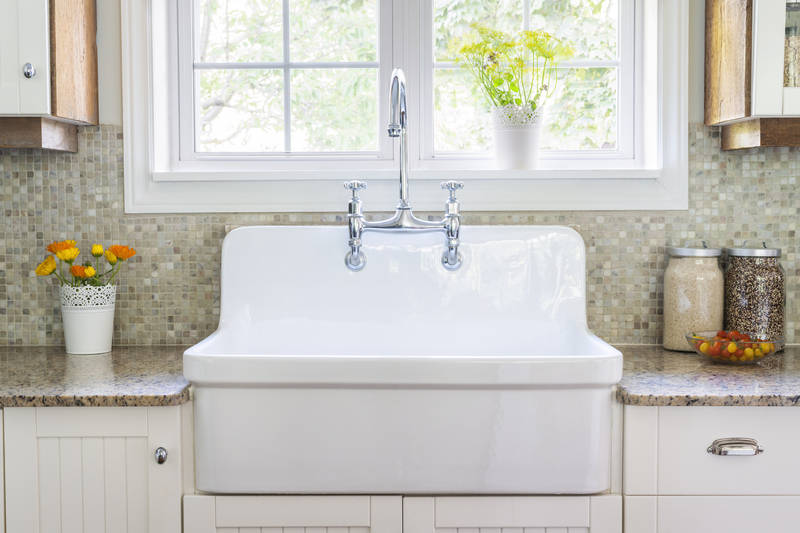Proper Methods to Clean Computers
Posted on 07/02/2025
Cleaning your computer is not just about maintaining its external aesthetics; it is crucial for prolonging the machine's life, ensuring optimal performance, and preventing overheating. Dust, dirt, and grime can accumulate in various parts of your computer, which can lead to hardware failure, reduced cooling efficiency, and other operational issues. This article will guide you through the proper methods to clean computers, including both desktop and laptop devices.
Why is Cleaning Your Computer Important?
Computers, whether desktops or laptops, often reside in environments where dust and dirt are all too common. Over time, these particles can clog vents, adhere to components, and cause overheating issues. Here are some reasons why cleaning your computer is paramount:
1. Enhanced Performance: Dust-covered components can lead to thermal throttling, where your computer's performance is reduced to lower temperatures.
2. Longevity: Cleaning prevents dust buildup that can cause wear and tear on components.
3. Reduced Noise: Fans working harder to cool a dusty computer can be noisier.
4. Healthier Environment: A clean computer reduces the potential for allergens to accumulate.

Preparatory Steps Before Cleaning
Before diving into the cleaning process, it's essential to take some preparatory steps:
1. Power Down and Unplug: Always turn off your computer and unplug it from any power source. This is crucial to avoid electrical shocks and protect internal components.
2. Gather Supplies: You'll need a can of compressed air, microfiber cloths, isopropyl alcohol (preferably 90% or higher), cotton swabs, and a small brush.
3. Anti-Static Precautions: Wear an anti-static wrist strap to prevent damaging sensitive internal components with static electricity.
External Cleaning of Desktop and Laptop Computers
Start with the exterior before moving to the internal components.
1. Wipe Down the Exterior: Use a microfiber cloth slightly dampened with water or isopropyl alcohol to wipe the outer casing. Avoid harsh chemicals that can damage the finish.
2. Keyboard: Keyboards can harbor a significant amount of dirt. Turn the keyboard upside down and shake gently to dislodge any loose debris. Use compressed air to blow out particles from between the keys. For stuck-on grime, a lightly dampened cotton swab with isopropyl alcohol can be used.
3. Screen: Screens should be cleaned with a microfiber cloth designed for electronics. Avoid using paper towels or rough cloths as they can scratch the screen. If necessary, use a screen cleaning solution, but make sure it's suitable for your type of monitor.
Internal Cleaning of Desktop Computers
Dust and debris inside the computer can be more harmful than the dirt on the outside. Here's how to clean the internal components:
1. Open the Case: Most desktop cases have screws that need to be removed to open. Carefully remove the side panel to access the internals.
2. Use Compressed Air: Hold the can of compressed air upright and use it to blow dust out of the case. Pay special attention to fans, heat sinks, and other components where dust tends to accumulate. Hold fans steady to prevent them from spinning excessively.
3. Clean the Components: For stubborn dust, a small brush can be used to gently dislodge debris. Be cautious with delicate parts, such as RAM sticks and cables.
4. Close the Case and Reassemble: Once cleaned, reattach the side panel and any screws. Ensure everything is securely fastened before plugging the computer back in.
Internal Cleaning of Laptop Computers
Cleaning laptops requires more delicate handling due to their compact size and sensitive components.
1. Accessing the Interior: Depending on your laptop model, you may need to remove the back panel to access the internals. Use the appropriate screwdriver to do so carefully.
2. Use Compressed Air: Blow out dust from the internal components using compressed air. Again, hold the can upright and keep it at a safe distance. Pay attention to the cooling fan and ventilation areas.
3. Clean the Fans and Vents: Fans are usually the first components to gather dust. Hold them in place while using compressed air to avoid damage. Clean the vents to ensure proper airflow.
4. Reassemble the Laptop: After cleaning, carefully reattach the back panel. Ensure all screws are snug but not overly tight.
Cleaning Peripherals
Computer peripherals like the mouse, keyboard, and monitor should also be cleaned regularly.
1. Mouse: Use a damp cloth with isopropyl alcohol to clean the exterior. For an optical mouse, ensure the sensor area is dust-free.
2. External Keyboard: Follow similar steps as for an internal keyboard. For mechanical keyboards, consider removing keycaps for a thorough clean.
3. Monitor: Clean with a microfiber cloth and suitable screen cleaner. Avoid applying excessive pressure which could damage the display.

Best Practices for Maintaining a Clean Computer
1. Regular Cleaning Schedule: Aim to clean your computer every 3 to 6 months.
2. Environment Care: Keep your computer in a clean, dust-free area.
3. Use Dust Covers: When not in use, consider placing dust covers over your components.
4. Proper Ventilation: Ensure your computer is well-ventilated and not placed on surfaces that can block airflow, such as beds or carpets.
Conclusion
Properly cleaning your computer is essential for maintaining its performance and lifespan. By following these methods and incorporating them into a regular maintenance routine, you can ensure that your computer continues to run smoothly and efficiently. Not only will you experience improved performance, but you'll also prevent potential hardware issues caused by overheating and dust accumulation. Remember, a clean computer is a happy computer.









